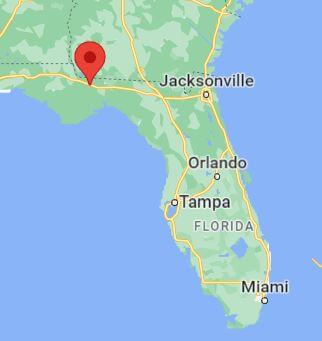With a service area encompassing four counties and offering a mix of terrain from foothills to the coast, Talquin Electric Cooperative provides power, water and wastewater services to their customer base in the Florida panhandle.
As their old water and wastewater SCADA communications system neared end of life, it became a priority for Talquin to replace the system with upgraded communications to bring stronger resilience to the utility.
The Challenge
Talquin’s legacy water and wastewater SCADA communications system was built around a centralized master repeater which served the whole territory. “This repeater was a high power VHF system with lower throughput built on a legacy centralized model.” says Nathan Sutfin, Network Manager at Talquin Electric Cooperative. “Another major risk was that we had challenges in acquiring replacement parts for the legacy system – this additional factor meant we had to move quickly.”
While Talquin’s water sites are positioned up high, the wastewater sites are typically situated in low lying locations, including ravines and holes, which make RF connectivity difficult. “Traditionally, the legacy sites weren’t built with robust communications in mind, so we had some interesting RF challenges to overcome.”
Furthermore, the service territory is prone to strong winds so the wind loading of antennas was a factor for consideration. Operating temperatures were also an important factor as in many parts of Florida with extreme temperature swings from one day to the next.
With a bi-directional flow of data constantly measuring aspects such as pump activity, water levels and flow, near real time network visibility was also imperative.
The Solution
Talquin had some clear requirements for their replacement water SCADA communications – decentralization, low latency and high resiliency.
“We knew we had to limit the risk inherent in a centralized model. With the MimoLink™ system, we built sectorized deployments across our territory in order to increase coverage and visibility to all of our sites. This approach helped to minimize the risk of losing the entire system due to a single repeater station going offline” says Nathan.
The system designed with Ubiik’s Tornado radios was comprised of multiple tri-sector base radio sites with remote radios connecting to these sectors. Incorporating both MIMO and full duplex communications, the system was able to provide a higher data throughput than the original system, combined with ultra-low latency for near real time visibility.
“We piloted a few different systems but the choice to select the Tornado was based on a few factors. The extreme receiver sensitivities, which allows for data recovery in noisy environments via MIMO, the ability of the radio to seamlessly pass our underlay traffic and the availability to support a direct IO for future use cases. We needed radios that offered relatively low latency, high resiliency and could withstand harsh environments.”
Results
Phase one of the water SCADA deployment is underway with over half of the radios installed. The additional coverage provided by the MimoLink™ system has meant that sites which traditionally did not have SCADA connectivity may also be able to be connected, boosting Talquin’s network visibility.
“In terms of throughput, the performance of the new system is amazing. From an RF perspective, the results have been good even though we are using the 400MHz band which is popular for LMR and pagers,” says Nathan. “Occasionally we may see interference; however, the radios have the ability to provide us with detailed stats so we can determine the nature of the interference and work quickly towards a resolution.”
Map

